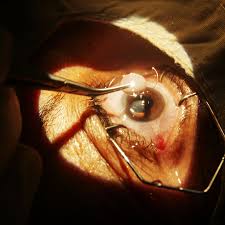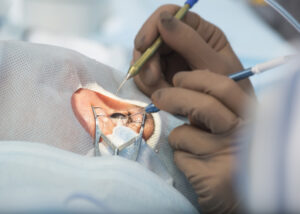LASIK (Laser-Assisted In Situ Keratomileusis) surgery has become a popular choice for those seeking to correct vision problems such as myopia, hyperopia, and astigmatism. As with any surgical procedure, understanding the recovery process is crucial for achieving optimal results. This article aims to provide a comprehensive overview of what to expect during and after LASIK surgery recovery, ensuring you are well-prepared for this transformative experience.
Understanding LASIK Surgery
Before delving into the recovery process, it is essential to understand what LASIK surgery entails. The procedure involves reshaping the cornea using a laser to improve how light is focused on the retina. This quick, outpatient procedure typically takes less than 30 minutes per eye, and many patients experience immediate improvements in their vision. The technology used in LASIK has advanced significantly over the years, with modern techniques offering enhanced precision and safety, making it a popular choice for those seeking to correct refractive errors.
The Procedure
During LASIK surgery, the patient is given anaesthetic eye drops to numb the eyes. A device is used to keep the eyelids open, and a thin flap of corneal tissue is created using a microkeratome or femtosecond laser. The underlying corneal tissue is then reshaped with an excimer laser, and the flap is repositioned. Recovery begins almost immediately, but it is essential to follow post-operative care instructions for the best outcomes. Patients are often advised to rest their eyes and avoid strenuous activities for a few days to ensure optimal healing. Regular follow-up appointments with the ophthalmologist are crucial to monitor the healing process and address any concerns that may arise.
Benefits of LASIK
The primary advantage of LASIK surgery is the potential for significantly improved vision without the need for glasses or contact lenses. Most patients achieve 20/25 vision or better after the procedure. Additionally, LASIK is a relatively quick and painless procedure, allowing individuals to return to their daily activities within a short period. Beyond the immediate visual benefits, many patients report an enhanced quality of life, as they can engage in activities such as swimming, sports, and travel without the hassle of managing corrective eyewear. Furthermore, the long-term cost savings associated with not needing glasses or contact lenses can be substantial, making LASIK an appealing option for many individuals considering vision correction.
Immediate Post-Operative Care
Once the surgery is complete, patients will be monitored for a short time before being allowed to go home. It is crucial to have a friend or family member accompany you, as your vision may be blurry immediately after the procedure.
Initial Recovery Steps
In the first few hours post-surgery, patients may experience some discomfort, which can include a gritty sensation in the eyes, mild burning, or tearing. This is entirely normal and typically subsides within a few hours. To alleviate discomfort, patients are advised to rest in a dark, quiet room and avoid any strenuous activities. It is also beneficial to keep the eyes closed as much as possible during this initial recovery phase, as this can help reduce irritation and promote a sense of calm. Patients should be aware that their eyes may be sensitive to light, so wearing sunglasses when stepping outside can provide additional comfort.
Medications and Eye Drops
Following LASIK surgery, patients will be prescribed anti-inflammatory and antibiotic eye drops to prevent infection and promote healing. It is essential to adhere to the prescribed schedule for these medications. Additionally, artificial tears may be recommended to keep the eyes lubricated, as dryness is a common side effect after the procedure. Patients should also be mindful of the importance of hygiene when administering these drops; washing hands thoroughly before application can help minimise the risk of introducing bacteria to the eyes. It is advisable to avoid touching the eye area directly and to use a clean tissue to catch any excess liquid that may run down the cheek after applying the drops. Regular follow-up appointments with the ophthalmologist will be scheduled to monitor the healing process and ensure that any concerns are addressed promptly.
What to Expect in the Days Following Surgery
The first few days after LASIK surgery are critical for recovery. Most patients notice significant improvements in their vision within 24 hours, but it is essential to be mindful of certain precautions during this period.
Vision Fluctuations
It is common for vision to fluctuate during the first week post-surgery. Patients may experience periods of clarity followed by blurriness, particularly in low-light conditions or when focusing on small text. These fluctuations are typically temporary and should stabilise within a few weeks. It is important to remember that everyone’s healing process is unique; some may find their vision stabilising faster than others. Keeping a journal of your vision changes can be helpful, allowing you to track improvements and discuss any concerns with your eye care professional.
Avoiding Eye Strain
During the initial recovery period, it is advisable to avoid activities that may strain the eyes, such as reading, using digital devices, or watching television for extended periods. Instead, focus on resting your eyes and allowing them to heal. If necessary, short breaks can be taken, but it is best to limit screen time as much as possible. Additionally, consider engaging in relaxing activities that do not require intense visual focus, such as listening to music or audiobooks. This can provide a welcome distraction while allowing your eyes the necessary rest they need to recuperate effectively.
Moreover, it is crucial to adhere to any prescribed post-operative care routines, including the use of medicated eye drops. These drops help to prevent infection and reduce inflammation, playing a vital role in your recovery. Make sure to follow the instructions given by your surgeon meticulously, as skipping doses or improper application can hinder your healing process. Staying hydrated and maintaining a balanced diet can also support your recovery, as proper nutrition contributes to overall eye health and aids in the healing of tissues.

Long-Term Recovery and Care
While the initial recovery period is crucial, long-term care is equally important for ensuring the best possible outcome from LASIK surgery. Understanding what to expect in the weeks and months following the procedure can help patients navigate their recovery effectively.
Follow-Up Appointments
Patients will typically have follow-up appointments scheduled within the first week after surgery and again at one month, three months, and six months post-op. These appointments are essential for monitoring healing and addressing any concerns. During these visits, the eye doctor will assess vision quality and make any necessary adjustments to the treatment plan. It is vital for patients to attend these appointments, as they provide an opportunity for the surgeon to check for any potential complications, such as dry eyes or infection, which can hinder the recovery process. Additionally, these sessions allow for discussions about any changes in vision and the overall satisfaction with the results of the surgery.
Protecting Your Eyes
In the weeks following LASIK surgery, protecting your eyes is paramount. Patients should avoid swimming, hot tubs, and activities that may expose the eyes to dust or debris. Wearing sunglasses outdoors is also recommended to shield the eyes from UV rays and reduce glare. Furthermore, it is advisable to refrain from rubbing the eyes, as this can disrupt the healing process and potentially displace the corneal flap created during the procedure. Patients should also consider using lubricating eye drops as prescribed by their doctor to alleviate any dryness or discomfort, which is a common side effect during the recovery phase. Maintaining a clean environment and being mindful of allergens can also contribute significantly to a smoother recovery.
Common Concerns During Recovery
As with any medical procedure, patients may have concerns during their recovery. Addressing these issues early can alleviate anxiety and promote a smoother healing process.
Dry Eyes
Dry eyes are one of the most common side effects following LASIK surgery. Patients may experience a sensation of dryness, grittiness, or burning. This condition is usually temporary and can be managed with artificial tears or prescribed medications. It is essential to communicate any persistent symptoms to your eye care professional.
Visual Disturbances
Some patients may experience visual disturbances, such as halos or glare, particularly at night. These symptoms often improve over time as the eyes heal. However, if they persist or worsen, it is important to consult with your eye doctor for further evaluation.
Returning to Normal Activities
Most patients can return to their normal activities within a few days following LASIK surgery. However, it is essential to listen to your body and not rush the recovery process.
Work and Exercise
Many individuals can return to work within a day or two, depending on the nature of their job. Those with physically demanding occupations may need to take additional time off. Light exercise can typically be resumed within a week, but high-impact activities should be avoided for at least a month.
Driving
Patients are advised not to drive on the day of surgery. Most can resume driving within a few days, but it is crucial to ensure that vision is stable before getting behind the wheel. A follow-up appointment will help determine when it is safe to drive again.
Maintaining Eye Health After LASIK
Once the recovery process is complete, maintaining eye health is vital for long-term success. Adopting healthy habits can contribute to optimal vision and overall eye wellness.
Regular Eye Exams
Even after LASIK surgery, regular eye examinations remain essential. These check-ups allow eye care professionals to monitor eye health, detect any potential issues early, and ensure that your vision remains stable. It is recommended to schedule an eye exam at least once a year.
Healthy Lifestyle Choices
Maintaining a healthy lifestyle can have a positive impact on eye health. A balanced diet rich in vitamins and minerals, particularly those beneficial for eye health such as omega-3 fatty acids, vitamins C and E, and zinc, can help maintain good vision. Additionally, staying hydrated and avoiding smoking are crucial for overall eye wellness.
Conclusion
Recovering from LASIK surgery is a journey that varies from person to person. Understanding what to expect during and after the procedure can help ease anxiety and promote a smoother recovery. By following post-operative care instructions, attending follow-up appointments, and maintaining healthy habits, patients can enjoy the benefits of improved vision for years to come.
Ultimately, LASIK surgery offers a remarkable opportunity for those seeking freedom from glasses and contact lenses. With proper care and attention during the recovery process, patients can look forward to a clearer, brighter future.
Other resources: Surgery LASIK vs. SMILE Which Vision Correction Is Better


